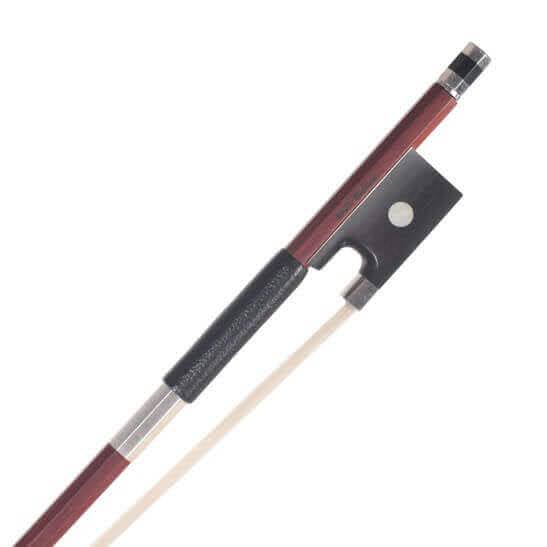Introduction
Whether you’re a seasoned musician or a budding enthusiast exploring violins for sale, understanding how temperature affects your instrument and bow is crucial. It’s not just about maintaining your instrument’s appearance; it’s about ensuring its longevity and the quality of its sound. In this guide, we’ll delve into the pivotal role temperature plays in caring for your stringed treasures, offering insights that will help you safeguard your investment and keep your music resonating beautifully. Let’s embark on this melodic journey together, ensuring your prized instruments remain in harmony with their environment.
How Does Temperature Affect Your Musical Instrument and Bow?
When you cherish your musical instrument, understanding the impact of temperature is crucial. It’s not just about maintaining it for longevity; it’s about ensuring the quality and soul of the music it produces. Instruments like violins, violas, and cellos, and their bows, are sensitive to temperature changes. Warm environments can cause the wood to expand and the varnish to soften, potentially altering the instrument’s sound quality. Conversely, cold conditions might contract, crack the wood, and even affect the bow hair’s elasticity.
Visiting your favorite violin shop in Atlanta, you might notice how carefully the instruments are stored, and this is to prevent such damage. Whether violins, violas, cellos, or bows for sale, each requires consistent temperature to maintain impeccable sound and condition. Remember, the right temperature ensures your instrument remains a treasured companion in your musical journey, resonating with pure, undisturbed sound every time you play.
Effect of Humidity on Your Instrument and Your Bow

Humidity plays a pivotal role in the life of your string instruments and bows, akin to the nuanced artistry found in a well-curated violin shop in Atlanta. When the moisture levels in the air swing dramatically, your violin, viola, or cello feels it deeply. High humidity can make the wood swell, potentially warping the body and affecting sound clarity, while low humidity can cause the wood to crack, risking irreversible damage.
For aficionados browsing violins, violas, or cellos for sale, understanding the balance of humidity is essential. It’s not just about the initial quality but ensuring these exquisite instruments’ longevity and pristine condition. Similarly, the often overlooked bow requires equal attention, as its hair and wood can deteriorate without proper humidity control. Ensuring a stable environment mirrors the care you invest in your music, preserving the instrument’s voice and unique sound.
Effect of Heat and Varnish on Your Instrument and Your Bow
The ambient temperature of its surroundings should not match the warmth that your string instrument exudes in its sound. Heat can be a silent adversary to the cherished varnish and delicate wood of your violin, viola, or cello. The lustrous varnish that enhances the wood’s resonance and beauty is particularly vulnerable, potentially becoming soft and sticky in high heat, which may lead to discoloration or damage, affecting appearance and sound quality.
For enthusiasts visiting a violin shop in Atlanta, the impact of heat on instruments is a crucial consideration, especially for those eyeing violins, cellos, or violas for sale. Violin bows are equally susceptible, with heat possibly compromising the tension and integrity of the bow hair, which is essential for producing the perfect sound. Ensuring you keep your instrument and bow in a temperature-controlled environment is equivalent to preserving their exquisite craftsmanship and the beautiful music they make.
Effect of Cold Temperatures on Your Instrument and Your Bow

The crispness of cold air can be refreshing, but it’s a condition in which you must handle your stringed instruments with care. Freezing temperatures pose a significant risk, particularly to the fine woods of violins, violas, and cellos, which can contract and sometimes crack in low-temperature environments; this affects the instrument’s appearance and can lead to a compromised sound quality, undermining the warmth and richness of its tone.
When you visit a violin shop, whether to browse violins for sale or to seek advice, it’s worth discussing how to protect your instrument from the cold. The bow, too, requires attention, as its hair and wood are sensitive to changes in temperature, impacting its flexibility and responsiveness. Keeping your cherished instruments and bows in a controlled environment can prevent cold-induced damage, preserving their beautiful sound and prolonging their lifespan.
Conclusion
Understanding the nuanced effects of temperature and humidity on your string instruments and bows is vital to their longevity and your musical satisfaction. Whether you’re a seasoned musician or a passionate beginner, the care you invest in your instrument reflects in the beauty of its sound. Remember, instruments are not just tools but extensions of your artistic expression, deserving meticulous care. For those seeking the perfect piece or maintenance tips, visiting a trusted violin shop like Ronald Sachs Violins can offer valuable insights and an exquisite selection of violins, violas, cellos, and bows, ensuring your musical journey is harmonious, enduring, and profoundly rewarding.
